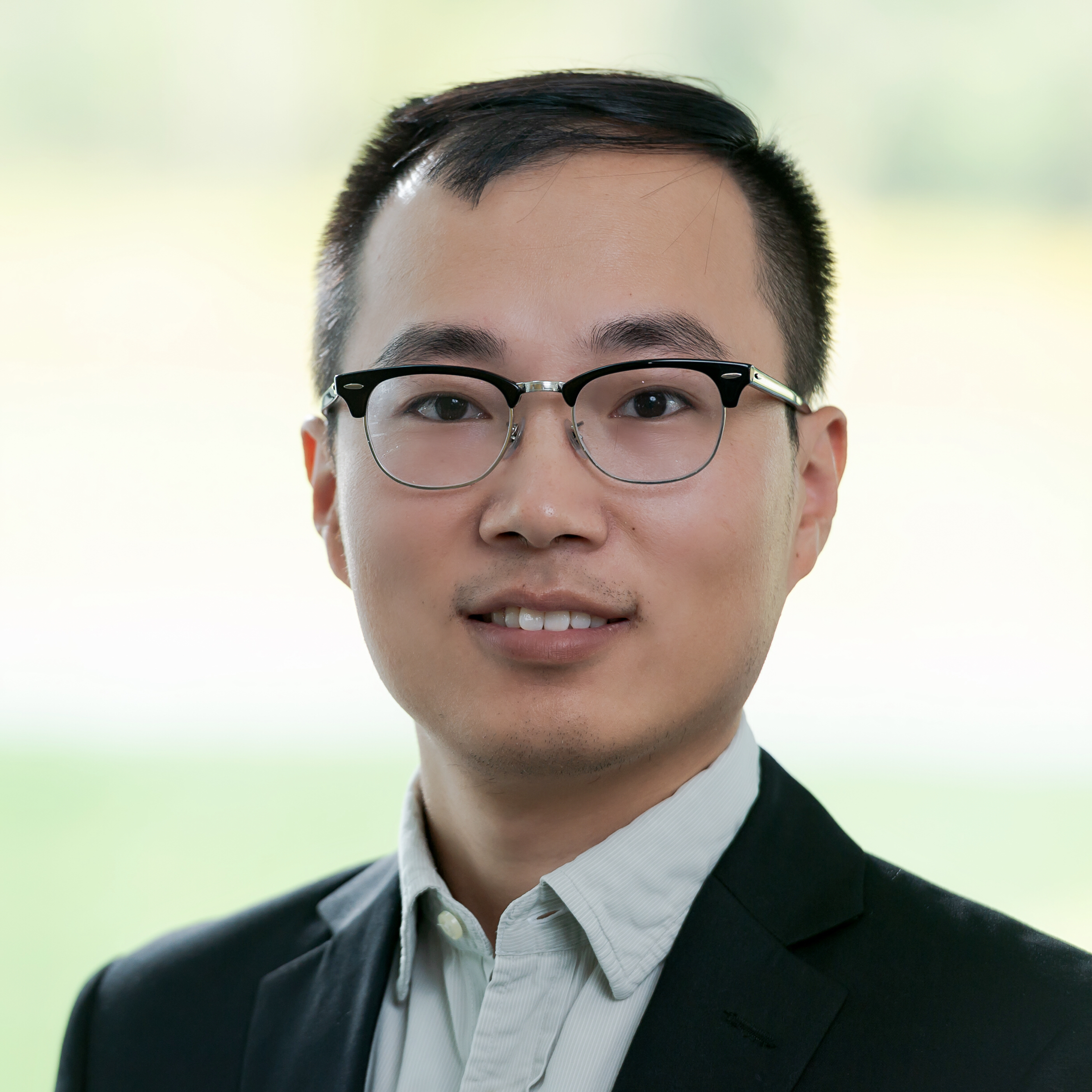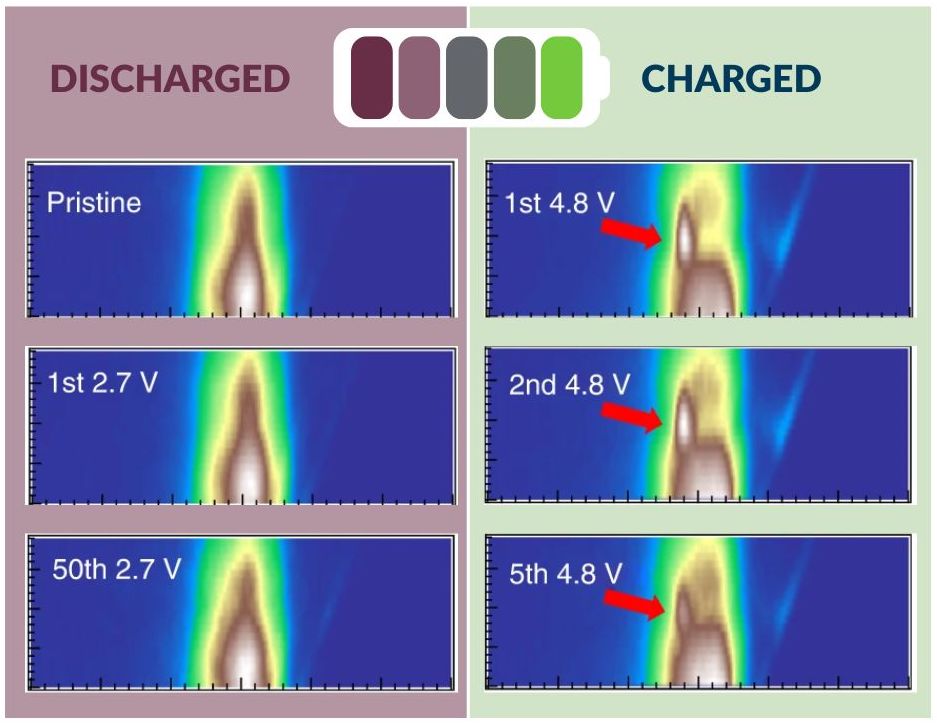by Cindy Lee

Guiliang Xu, a chemist in the Chemical Sciences and Engineering division at Argonne National Laboratory, is the 2025 winner of the Early Career Award for Outstanding Scientific Achievement at the Advanced Light Source (ALS). His selection, by members of the ALS Users’ Executive Committee (UEC), recognizes his work on synchrotron-based characterization of battery materials.
A career grounded in energy storage
During his PhD at Xiamen University, Xu frequently traveled to the Shanghai Synchrotron Source. He focused on understanding the reaction mechanism of battery materials, work that relied on cutting-edge characterization tools.
That early experience set the stage for his career, and he has continued to use synchrotron facilities to characterize batteries from material discovery to cell diagnostics. For 11 years, Xu has been based at Argonne, home to the Advanced Photon Source (APS). The APS recently underwent an upgrade, necessitating a dark period, but that didn’t stop Xu. In fact, he said, “The shutdown of the APS for two years actually opened an opportunity for me to work with the ALS and NSLS-II.”
It is telling that Xu says he works with these facilities; collaboration is at the heart of his research. “On Day 1, when I joined Argonne, I was educated on the spirit of collaboration within the national labs,” he explained. He found a similar commitment to collaboration in ALS scientists Wanli Yang and Dula Parkinson. They helped him understand the capabilities at their respective beamlines, provided preliminary results, and worked with him to develop new techniques for operando battery characterization.

“Communication between the user facility and the user is really important,” Xu said. “Developing new techniques helped us advance battery chemistry itself.”
Xu learned about the benefits of resonant inelastic x-ray scattering (RIXS) in probing oxygen redox in layered oxide cathodes from Yang at a Gordon Research Conference in 2018, and the two began collaborating in 2021. Battery materials are very sensitive to environmental conditions and time, so sample preparation to preserve the sample state for synchrotron characterization can be tricky. “Wanli handles quite a lot of oxygen-redox cathodes, so he provided very detailed instructions about sample preparation for ex situ RIXS measurements,” said Xu.
The careful sample preparation and experimental design paid off, and Xu was able to uncover the cause of irreversible oxygen redox and structural degradation in single-crystalline battery materials.
“This discovery marks a paradigm shift in how the battery community understands and controls oxygen redox activity, especially in high-voltage lithium-ion systems,” explained Yang.
New materials for batteries
Even after this discovery, there was more to investigate.

“In my 15 years working on battery development, I’ve expanded my research from lithium-ion batteries to sodium-ion batteries, to lithium-sulfur batteries, and now to solid-state batteries,” Xu said.
New materials brought new experimental challenges. “There’s not one technique that can solve all the problems in diverse battery chemistries,” explained Xu. When he tried to understand the interface evolution in solid-state battery cells, Xu reached out to Parkinson about the microtomography technique. What began as a simple email correspondence quickly flourished into a robust collaboration and beamtime in multiple cycles. Through their collaboration, Xu developed an in situ solid-state cell and employed operando microtomography at the ALS to visualize interface evolution during operation. Understanding the mechanism of battery degradation and proposing ways to suppress that degradation are significant steps for the field. “These findings have opened entirely new research directions and design principles for solid-state battery interfaces,” Yang said.
Team science boosts energy research
In collaborative projects, organizing a multitude of techniques, facilities, and researchers is not a trivial effort. Parkinson lauded Xu for being willing to give and share credit.
“I saw him navigate the sometimes controversial process of sorting out the author list, and I was impressed by how he handled it,” said Parkinson. “He has a bright future in team science!”
Xu’s research acumen and collaborative spirit have also won him the support of collaborators like Brookhaven National Laboratory Physicist Xiao-Qing Yang, who described the breadth of Xu’s impact on the battery field.
“His pioneering coating techniques improve battery safety and longevity, while his patented sodium-ion battery materials offer cost-effective, high-capacity alternatives to lithium-based systems,” explained Xiao-Qing Yang. He added, “In lithium-sulfur research, his discoveries in catalyst-driven mechanisms and electrolyte design have enabled record-setting energy densities and longer cycle life.”
Throughout Xu’s experiments, patents, technique development, and team science, his passion for the research has been an enduring theme.
“I was inspired by my PhD advisor, Professor Shi-Gang Sun, and my manager at Argonne, Dr. Khalil Amine. They have inspired me to be a scientist,” Xu explained. “They’ve taught me to keep passion in fundamental research and how to take lab-scale technologies a step further towards industry applications.”
These are lessons that Xu has since imparted to the people he mentors. He described his strategy for his team. “Mentoring is being very clear about what everyone is trying to achieve for their career, and then developing different strategies for them to help them to achieve their career goals.” He’s proud to have championed his team members’ career paths in both academia and industry.
Harnessing both soft and hard x-rays in his work, Xu embodies the principle of team science and stays true to his goal of doing impactful research.
“His innovations have lowered technical barriers, demonstrated access to highly-sensitive, real-time chemical mapping in large-scale scientific facilities, and been widely adopted by users around the world,” said Wanli Yang. “He is empowering a global community of researchers to pursue more ambitious, complex, and societally relevant challenges using synchrotron facilities like the ALS.”